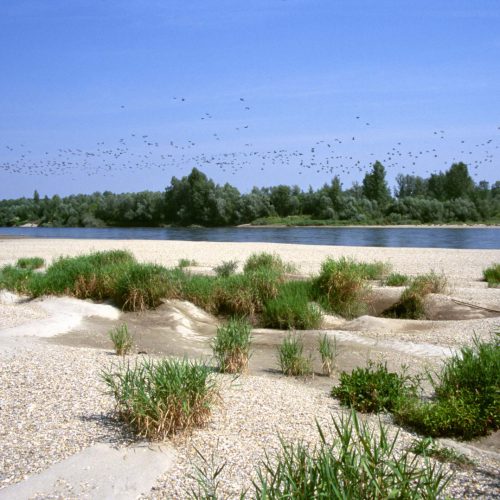News
Drava River and UNESCO Cross-border Biosphere Reserve Mura-Drava-Danube Endangered by Large Hydropower Plants
Zagreb – Drava river in Croatia, part of the Natura 2000 network, the Mura-Drava Regional Park and a significant part of the UNESCO Cross-border Biosphere Reserve Mura-Drava-Danube, is under great threat of the construction of two large hydroelectric power plants - Molve 1 and Molve 2. From its source in Italy, the Drava is under pressure of 22 hydro power plants, three of which are in Croatia, but in the upper flow. The proposed location for Molve 1 and Molve 2 hydropower plants is at the heart of the “Amazon of Europe” – the most preserved and ecologically most valuable part of the Drava River along its entire course.
The construction of the hydropower plants at Drava, Molve 1 and Molve 2 would have a great impact on nature and the environment, since two accumulations in the total length of almost 30 km would destroy the most valuable part Drava River. WWF and other associations of the Drava League therefore call for a re-consideration of this political decision, as the idea of these hydropower projects originated before the EU accession and the proclamation of the European Ecological Natura 2000 network in Croatia and before the establishment of the Mura-Drava Regional Park and the UNESCO Cross-border Mura-Drava-Danube Biosphere Reserve with Hungary.
“WWF is committed to sustainable hydropower and system scale planning of hydropower and other energy projects, but opposes the construction of hydropower plants within protected areas. It is really important to think strategically when it comes to hydropower plants. Modernization of existing hydropower systems and their regular maintenance would also increase the capacity of electricity production. With the construction of the Molve 1 and Molve 2, the landscape of this area would be completely changed from the natural river flow to a series of accumulation,” said Ivana Korn Varga from WWF Adria.
WWF believes that all sectors from agriculture, environmental and nature protection, tourism, forestry, water, spatial planning and the non-governmental sector should be included in the planning of new energy facilities at the national level, in order to achieve joint vision of development and use of natural resources.
“We are concerned about the future status of the river Drava and the downstream areas of these two dams. Due to the accumulations, the groundwater level would further decrease and negatively affect agriculture, forestry and living in the area. Aaccumulations will have a negative impact on Repaš forest and forestry in that part, and would destroy the habitat of numerous plant and animal species. The local population, the Dravska League and WWF want to preserve the natural Drava, our river pearl and our treasure,” added Korn Varga.
The protection of ’European Amazons’ is one of the main priorities of WWF Adria, and with numerous partners from state institutions and non-governmental sector, several projects are being carried out to improve the state of the Mura River, the Drava River and the Danube River. WWF Adria is implementing two EU projects in the field of “Amazon of Europe”. In the DRAVA LIFE project with the Croatian Waters, WWF is working on the revitalisation of the Drava River habitats, and through the coop MDD project we are building foundations of future joint management of the UNESCO’s Cross-Border Biosphere Reserve Mura-Drava-Danube and cooperation between the protected areas of all five countries. There will also be a network of River schools along the rivers where local people and tourists can find out more about the area and species hat live here.
“The area of the Mura, Drava and Danube rivers is one of exceptional and untouched rivers, with rich floodplain forests and wetlands that offer home to many protected and endangered species, such as otter and beaver, white-tailed eagles, sturgeons or dunavian salmon. We can greatly benefit from EU funds, which can be used to co-finance investments in river restoration, the establishment of cross-sector cooperation and tourism promotion, thus ensuring sustainable river management for the well-being of people living along them and the species that depend on them,” concluded Korn Varga.
